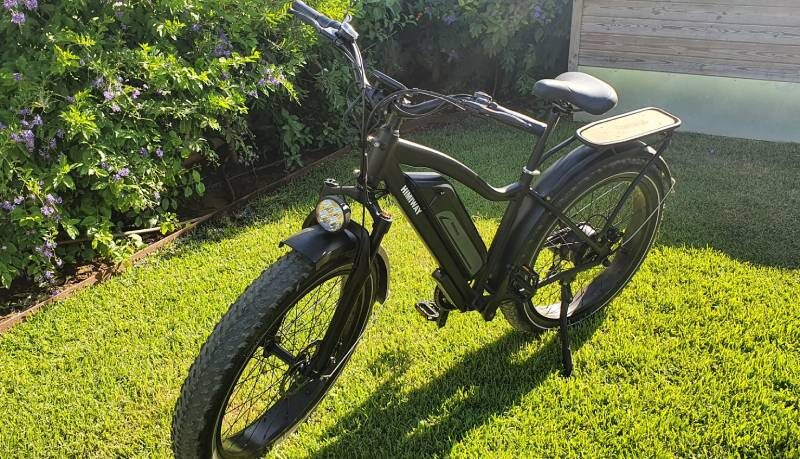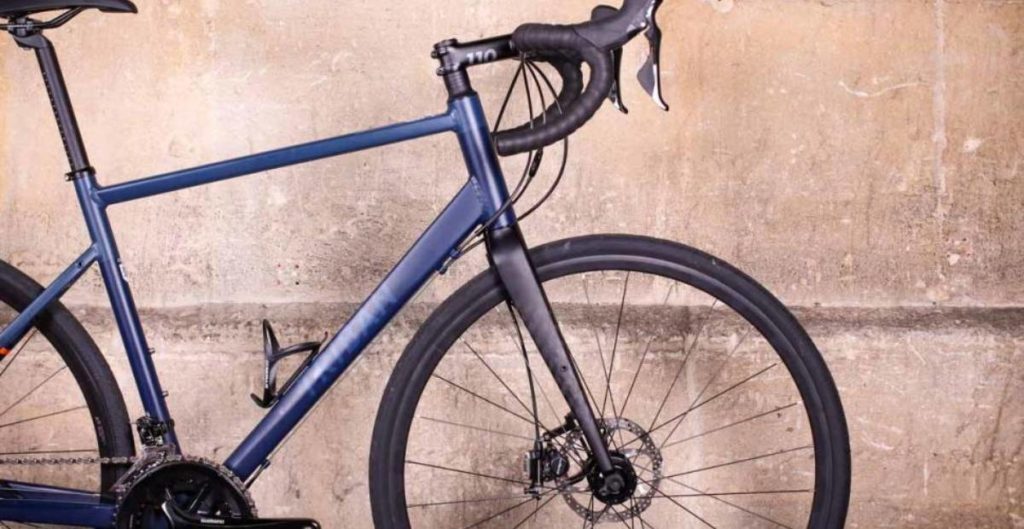Putting it simply, cycling is one of the best exercises you can do. Ok, it’s true to say I might be biased, but what other form of exercise allows you to travel whilst improving your fitness, health and stamina? It’s a win-win.
But sadly, within the epic breadth of modern cycling advertising, there isn’t a lot to include or entice people of a larger size. If you feel this is you, and you’ve been considering cycling to become fitter or lose weight, you could be forgiven for thinking that finding a suitable bike might be challenging.
But read on. Contrary to the slim, sporty and streamlined slant of many marketing campaigns, there are a number of options for you, and a number of different bikes you could be using to offer suitable support and comfort.
Before we focus on specific bikes, it’s important to think about the kind of riding you want to do. Think about whether you’ll be riding for leisure, commuting, or both. Also whether you’ll be riding on or off road, or want the option to ride on multi-surfaces. Your type of journey will also affect your baggage weight, which is something you also need to factor in.
Do Bicycles Have Weight Limits?
Bicycles do have weight limits. But with so many different types, geometry, materials and parts used, it’s impossible to standardise. Generally however, most bikes will have a weight limit of between 275 lbs and 300 lbs.
The table below can be used as a general guide, but before making the decision to buy a bike, it’s vital to check with the manufacturer as different brands do vary in terms of weight capacity. And for reference (or people who work in stone, like me), 300 lbs = 21 stone = 136kg.
| Type of Bike | Weight Limit |
|---|---|
| Hybrid bike | 300 – 350 lbs |
| Road bike | 220 – 275 lbs |
| Mountain bike | 300 lbs |
| Fat bike | 300 – 400 lbs |
| Gravel bike | 275 – 330 lbs |
| City bike | 300 lbs |
| Folding bike | 190 – 280 lbs |
| Electric bike | 220 – 400 lbs |
I think it’s fair to say that most good brand bikes are pretty robust, particularly when thinking about fat, hybrid or mountain bikes. But if you are thinking about cycling and you have a larger than average body type, there are a number of things to consider, irrespective of brand or bike type.
Wheels
These need to be strong. It would be simplistic to say that smaller wheels are always stronger than larger ones, as it does depend on the make and materials used. But generally, with a smaller circumference, 26” or 27.5” will be stronger than 29”. You also want at least 24 spokes, particularly on the back wheel, which supports more of your weight.
Tyres
Whether you’re cycling on or off road, choose thicker tyres for more stability. Wider tyres also offer more cushioning and more comfort, with the option to ride at lower pressure.
Frame
Frames made out of aluminum or steel are often better options for heavier riders. Steel is the strongest but is heavier to handle. Aluminum alloy is lighter than steel and not only durable, but generally less expensive.
Brakes
Naturally, with more weight on the bike, your brakes will have to work hard. You need high quality and reliable brakes. I would recommend disc brakes for more braking power. Mechanical disc brakes are also easier to maintain (in my opinion).
Suspension
Suspension will provide more comfort, on road and off. Again, this needs to be decent quality and to be checked and maintained regularly.
How Much Weight Can You Lose by Cycling to Work?
If you’re a heavier weight, you’ll burn more calories than an average-sized person. How many exactly will depend on how long you cycle for, but on a 30-minute ride you could burn 300 or more calories.
If you’re cycling to work three or more times per week, combined with a sensible and balanced diet, you will certainly lose weight. The World Health Organisation recommends, as a minimum, 150 minutes of moderate exercise per week for adults. It’s likely you will reach this with your commute, but if you’re finding it a struggle, it might be worth considering an electric bike. We’ll look at this option in more detail later.
Numbers of people cycling to work are on the increase, particularly since the Covid-19 lockdowns as people seek to avoid using public transport. But people are also finding that out of necessity, they’ve discovered a rejuvenating and active way not only to travel, but to lose weight too.
Read More: How Matt Lost 28lb Cycling During Covid
Most Comfortable Types of Bike for Overweight People
Choosing a bike with wider tyres, such as a fat bike or mountain bike, will offer more comfort for overweight people. Geometry is important, too. Riding in an upright position is more comfortable than bending down at an angle.
Remember also, that you can modify a bike. You can change the saddle, tyres, handlebars etc., to adapt it for your own comfort. A wider saddle is going to be far more comfortable than a streamlined one.

Fat Bikes
With fat tyres measuring four to five inches, fat bikes are designed for all-terrain riding, including snow, ice and sand. They come in different frame materials, and some versions are available with suspension.
Read More: What’s the Point of a ‘Fat Bike’?
Mountain Bikes
A mountain bike has large tyres with good grip, along with suspension. These combined, make for a cushioned ride, ideal for a heavier person. They’re designed predominantly for off-road use and not for speed, but to be honest, this needn’t be an issue.
Mountain bikes are not exclusively for ‘mountains’. Even if you’re primarily looking at road use, it’s easy to underestimate how uneven roads can be. The tyres and geometry of a mountain bike will provide more comfort on poorly-maintained roads, tracks, and the dreaded nightmare of cobblestones. I use my mountain bike on roads all the time, and I find it more than fast enough.
Read More: Are Mountains Good for Commuting?

Gravel Bikes
Sometimes called an adventure bike, the gravel bike is a great option for those who want the best of both worlds. A hybrid of a road and a mountain bike, the gravel bike is faster on roads. But with wider tyres than a road bike, it’s also built for off-road riding.
It’s a good all-purpose bike, ideal for a range of terrains and with comfort prioritised over speed. Although gravel bikes do have drop handlebars – unlike a road bike, the geometry helps to keep the rider in a more upright position. And some riders may want the choice of a more aerodynamic ride.
It’s worth also mentioning the hybrid bike. This is another good option for heavier riders as it’s designed for comfort and can take a lot of weight. The geometry is much the same as the mountain bike, but with smaller tyres the hybrid is designed for roads. It’s perfect for commuting and leisure (and moderate off-road use).
Read More: Are Gravel Bikes Any Good?
Are Fat Bikes Good for Heavy Riders?
Fat bikes are particularly good for heavy riders because their over-size tyres provide exceptional cushioning and comfort. At low pressure, the fat tyres absorb the shocks on any terrain, with superior grip and traction.
Most fat bikes have a weight limit of around 300 lbs, but some brands, such as Mongoose, offer bikes with weight limits of up to 400 lbs.
With a lot of road drag from the huge tyres, they’re not fast and can be heavy to handle. But if speed isn’t an issue, these bikes offer unrivalled comfort and stability.
Are Electric Bikes Good for Heavy Riders?
For heavier people looking to get fit or lose weight, an electric bike can be an ideal option. Studies have shown that riders of electric bikes tend to cycle more often and for longer distances. If you’re unused to cycling, and your ride is assisted, you’ll naturally be able to go further.
With the boom of electric bikes in recent years, it’s rare now to hear anyone describing them as “cheating”. And those people should probably be ignored. E-bikes assist the riders pedaling, and for those who are less fit to begin with, they offer an attainable way to increase fitness, stamina, heart health and circulation.
All of the bikes we’ve discussed are available in electric versions. You can also buy Electric Bike Conversion Kits and there are a number of different ways to convert a non-electric bike, if you decide later that you want the extra assistance.
Do Electric Bikes Help You Lose Weight?
Whether you’re riding for work or for leisure, using an electric bike will help you to shift the pounds. With pedal assist, you are still burning calories, and as the ride is easier, particularly for riders who are less fit, you’re far more likely to use the bike regularly.
In fact, on average, riding an electric bike burns approximately only 25% less calories than riding a regular bike. If your aim is to start cycling for commuting purposes, using an e-bike will help you succeed, and your journey to work will be helping you to lose weight.
The post Do Bikes Have Weight Limits? [Best Bicycles for Heavy Riders] appeared first on Discerning Cyclist.
![Do Bikes Have Weight Limits? [Best Bicycles for Heavy Riders]](https://bicycle.org/wp-content/uploads/2022/01/bike-types-760x380.jpg)